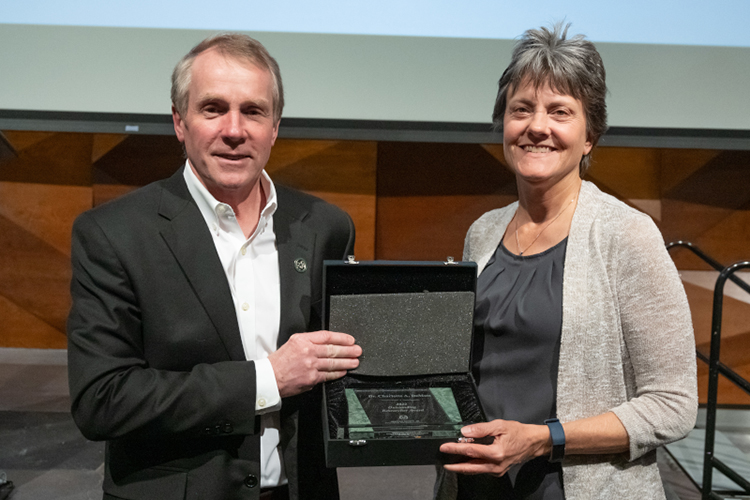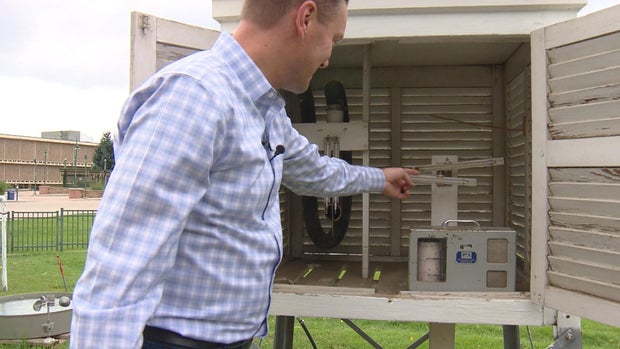Marshall County proposing ban of underground carbon dioxide capture systems – WSBT

Marshall County Proposes Ban on Carbon Sequestration Citing Environmental and Safety Concerns
Proactive Legislative Action on New Technologies
The Marshall County Planning Commission in Indiana has initiated a proposal to prohibit the use of carbon capture and sequestration (CCS) technology within its jurisdiction. This preemptive measure is being taken despite the absence of any current business proposals for such systems in the county. The commission is undertaking a comprehensive review of ordinances related to emerging technologies, which includes:
- Carbon Capture and Sequestration
- Data Centers
- Battery Energy Storage Systems
- Solar Energy Installations
According to Marshall County Commission President Stan Klotz, the decision to pursue an immediate ban on CCS allows the commission to focus on developing regulations for other technologies without being constrained by deadlines. This approach provides a protective measure that can be revisited in the future if more information becomes available.
Alignment with Sustainable Development Goals (SDGs)
The county’s deliberation and proposed actions reflect a strong focus on local environmental stewardship and community safety, aligning with several United Nations Sustainable Development Goals (SDGs).
- SDG 6: Clean Water and Sanitation: The primary driver for the proposed ban is the significant concern over the potential contamination of local aquifers. Planning Director Nicholas Witwer emphasized the need for more information to ensure the protection of these vital groundwater resources from the risks associated with underground carbon dioxide storage.
- SDG 11: Sustainable Cities and Communities: By addressing the potential dangers of CCS technology, such as reported ruptures and leaks in other regions, the county is prioritizing the safety and resilience of its communities. This proactive planning aims to prevent environmental disasters and safeguard public well-being.
- SDG 7: Affordable and Clean Energy: The commission’s concurrent review of ordinances for solar and battery energy storage indicates an engagement with the transition to cleaner energy systems, a core objective of SDG 7. The cautious approach to CCS highlights the complex decisions communities face in balancing different energy technologies.
- SDG 13: Climate Action & SDG 9: Industry, Innovation, and Infrastructure: While CCS is a technology designed to mitigate climate change (SDG 13) by managing industrial emissions (SDG 9), Marshall County’s position underscores the critical importance of local risk assessment. The decision prioritizes immediate environmental safety over the adoption of an innovative but not fully understood technology.
- SDG 16: Peace, Justice, and Strong Institutions: The Planning Commission’s process of holding regular public meetings to discuss and formulate these ordinances demonstrates transparent and accountable governance, reinforcing the role of strong local institutions in sustainable development.
Key Concerns and Justification for the Ban
County officials have cited several factors underpinning their cautious stance on Carbon Capture Systems, which involve capturing industrial carbon dioxide, compressing it, and injecting it deep underground for long-term storage.
- Risk of Contamination: The foremost concern is the potential for leaks that could contaminate underground aquifers, jeopardizing the county’s water supply in alignment with SDG 6.
- Technological Unknowns: A general lack of comprehensive data on the long-term safety and stability of underground CO2 sequestration informs the commission’s protective approach.
- Precedents of Failure: Officials referenced incidents in other locations, including a significant rupture in Mississippi, as evidence of the technology’s potential hazards. Planning Director Witwer noted, “the information out of those disasters, we don’t like.”
Future Outlook and Governance
The proposed ordinance would establish a comprehensive ban on carbon sequestration activities throughout Marshall County. The Planning Commission will continue its discussions on this and other technology-related ordinances during its public meetings, which are held on the fourth Thursday of each month. This ongoing process allows for continued public input and deliberation as the county navigates the complexities of new industrial and environmental technologies.
1. Which SDGs are addressed or connected to the issues highlighted in the article?
SDG 6: Clean Water and Sanitation
- The article directly connects to this goal through the primary concern of Marshall County officials: the potential contamination of drinking water sources. The Planning Director explicitly states the need to protect aquifers, which are critical for clean water supply.
SDG 9: Industry, Innovation, and Infrastructure
- The core topic is Carbon Capture Systems, a form of industrial and environmental infrastructure. The county’s decision to ban this technology is a direct engagement with policies surrounding new, and in their view, potentially unsustainable infrastructure.
SDG 11: Sustainable Cities and Communities
- This goal is addressed as the local government (Marshall County Planning Commission) is taking proactive legislative action (proposing ordinances) to protect its community from potential environmental hazards and ensure its long-term safety and resilience.
SDG 13: Climate Action
- Carbon Capture and Sequestration (CCS) is a technology specifically designed to mitigate climate change by capturing CO2 emissions. The county’s debate and proposed ban on this technology is a local-level action that intersects with broader climate change strategies and policies.
SDG 15: Life on Land
- The concern about pumping CO2 underground and the risk of leaks and ruptures relates to protecting terrestrial and subterranean ecosystems. A leak could harm not just water but also soil and local biodiversity, thus connecting to the goal of protecting life on land.
2. What specific targets under those SDGs can be identified based on the article’s content?
-
SDG 6: Clean Water and Sanitation
- Target 6.3: “By 2030, improve water quality by reducing pollution, eliminating dumping and minimizing release of hazardous chemicals and materials…” The county’s proposed ban is a preventative measure aimed at avoiding the potential release of CO2 into aquifers, which they fear could contaminate the water, thus aligning with the goal of reducing pollution.
-
SDG 9: Industry, Innovation, and Infrastructure
- Target 9.1: “Develop quality, reliable, sustainable and resilient infrastructure…” The county officials are questioning the reliability and sustainability of carbon capture infrastructure, citing “many unknowns” and “reported ruptures and leaks in other parts of the country.” Their decision to ban it reflects a judgment that the technology does not currently meet their standards for resilient infrastructure.
-
SDG 11: Sustainable Cities and Communities
- Target 11.b: “…substantially increase the number of cities and human settlements adopting and implementing integrated policies and plans towards… resilience to disasters…” The Marshall County Planning Commission is actively creating a policy (“working on an ordinance ban”) to manage a potential technological and environmental disaster (a leak or rupture), which is a direct implementation of this target at the local level.
-
SDG 13: Climate Action
- Target 13.2: “Integrate climate change measures into national policies, strategies and planning.” The article demonstrates this target being applied at a local level. The county is integrating a specific stance on a climate mitigation technology (carbon capture) into its local planning ordinances.
-
SDG 15: Life on Land
- Target 15.1: “…ensure the conservation, restoration and sustainable use of terrestrial and inland freshwater ecosystems…” The proposed ban is a direct act of conservation, intended to protect the local “underground” environment and “aquifers” (inland freshwater ecosystems) from the potential harm of a new industrial process.
3. Are there any indicators mentioned or implied in the article that can be used to measure progress towards the identified targets?
-
Indicator for Target 11.b
- Indicator 11.b.2: “Number of local governments that adopt and implement local disaster risk reduction strategies in line with national disaster risk reduction strategies.”
Explanation: The article explicitly states that the “planning commission is working on an ordinance ban for all of Marshall County.” This ordinance is a local disaster risk reduction strategy designed to prevent the specific hazard of a carbon sequestration leak. The creation and potential adoption of this ban is a direct, measurable action corresponding to this indicator.
- Indicator 11.b.2: “Number of local governments that adopt and implement local disaster risk reduction strategies in line with national disaster risk reduction strategies.”
-
Indicator for Target 13.2
- Indicator 13.2.1: “Number of countries that have communicated the establishment or operationalization of an integrated policy/strategy/plan…”
Explanation: While this indicator is typically measured at the national level, the article provides a local-level example of its principle. The “new ordinances involving Carbon Capture Systems” represent an integrated policy and plan related to climate change mitigation technology. The existence of this ordinance serves as a tangible indicator of policy integration.
- Indicator 13.2.1: “Number of countries that have communicated the establishment or operationalization of an integrated policy/strategy/plan…”
-
Implied Indicator for Target 6.3
- Indicator: Prevention of contamination incidents in groundwater.
Explanation: The article’s focus on the “risk of contamination” and the desire to “make sure we’re protecting” the aquifers implies that a key measure of success for the county is the absence of pollution incidents from this specific source. The success of their ban would be measured by zero contamination events related to carbon sequestration.
- Indicator: Prevention of contamination incidents in groundwater.
4. Create a table with three columns titled ‘SDGs, Targets and Indicators” to present the findings from analyzing the article. In this table, list the Sustainable Development Goals (SDGs), their corresponding targets, and the specific indicators identified in the article.
| SDGs | Targets | Indicators |
|---|---|---|
| SDG 6: Clean Water and Sanitation | Target 6.3: Improve water quality by reducing pollution and minimizing the release of hazardous materials. | Implied Indicator: Absence of groundwater/aquifer contamination incidents from carbon sequestration activities. |
| SDG 9: Industry, Innovation, and Infrastructure | Target 9.1: Develop quality, reliable, sustainable and resilient infrastructure. | Implied Indicator: Number of reported ruptures and leaks from carbon capture systems (which the county aims to keep at zero within its borders). |
| SDG 11: Sustainable Cities and Communities | Target 11.b: Increase the number of cities adopting and implementing integrated policies and plans for resilience to disasters. | Specific Indicator: The existence of a local government ordinance banning carbon capture to reduce disaster risk (Indicator 11.b.2). |
| SDG 13: Climate Action | Target 13.2: Integrate climate change measures into policies, strategies and planning. | Specific Indicator: The establishment of a local policy/ordinance that directly addresses a climate mitigation technology (related to Indicator 13.2.1). |
| SDG 15: Life on Land | Target 15.1: Ensure the conservation of terrestrial and inland freshwater ecosystems. | Implied Indicator: Maintenance of the integrity of subterranean ecosystems and aquifers, measured by the prevention of damage from leaks. |
Source: wsbt.com

What is Your Reaction?
 Like
0
Like
0
 Dislike
0
Dislike
0
 Love
0
Love
0
 Funny
0
Funny
0
 Angry
0
Angry
0
 Sad
0
Sad
0
 Wow
0
Wow
0












































































